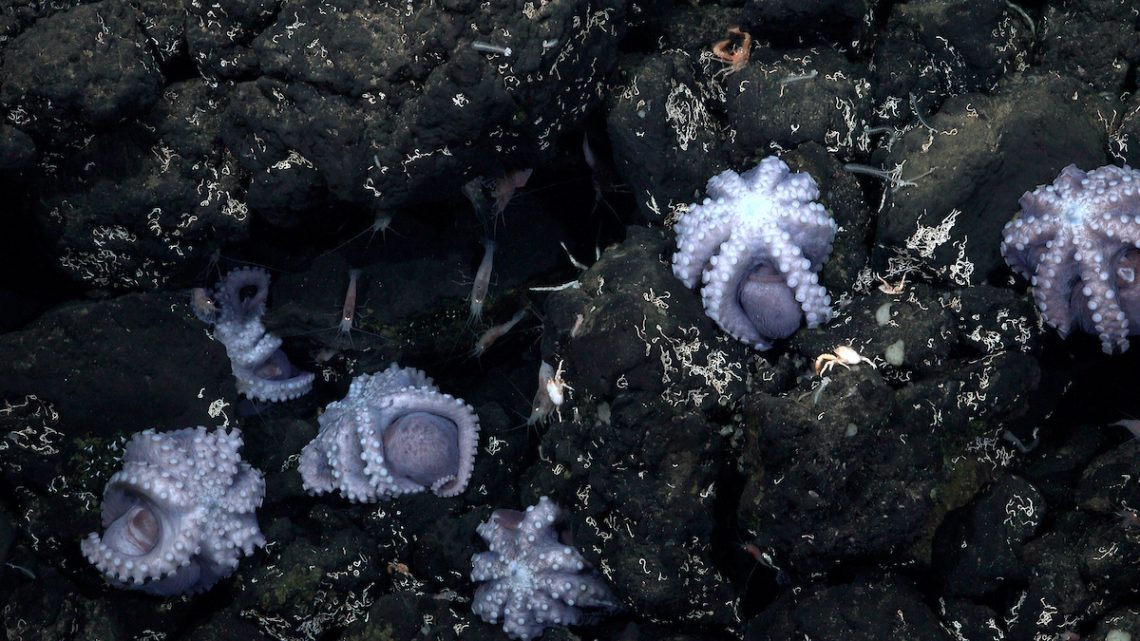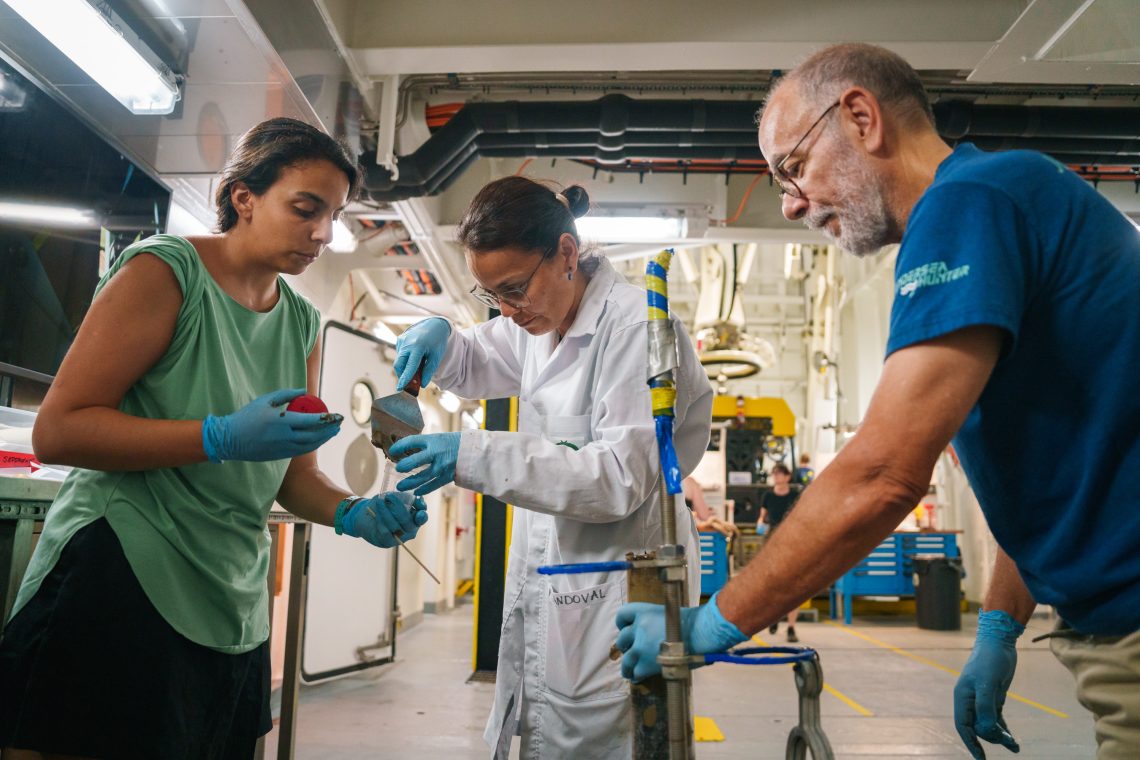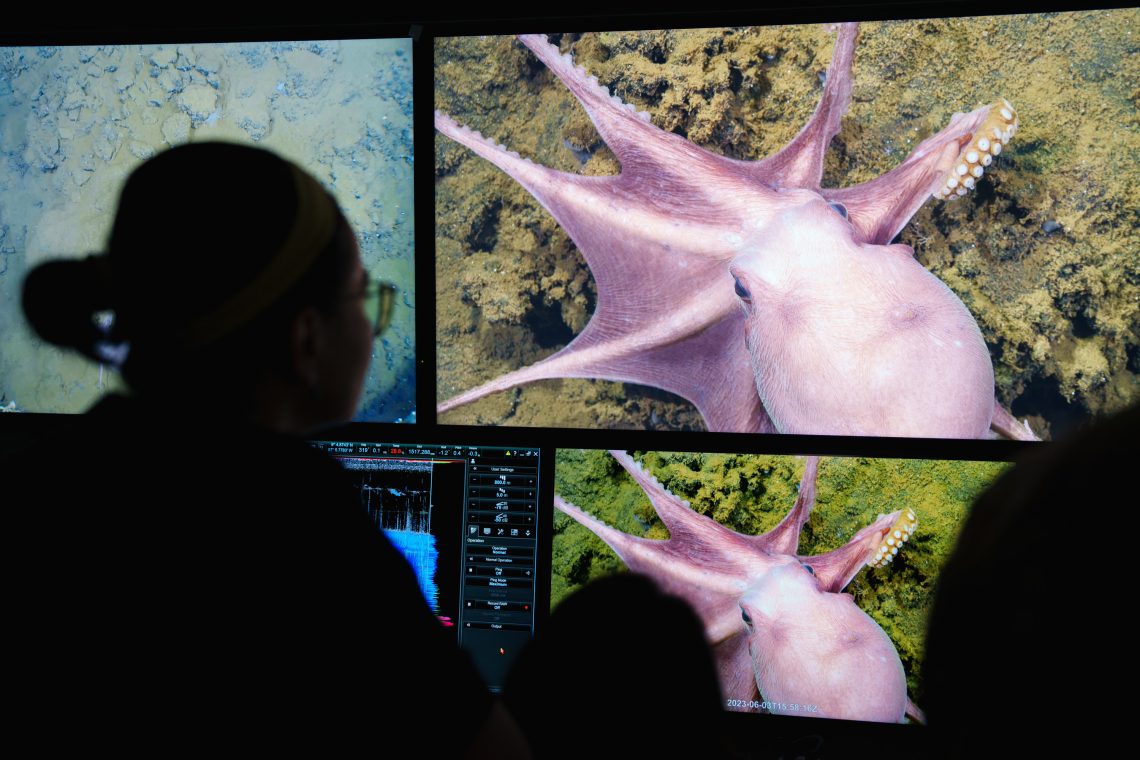International team of scientists explored previously unseen seamounts in Costa Rica, found new active octopus nursery and witnessed babies hatching
Video and photos available here.
Puntarenas, Costa Rica – A team of international scientists have discovered a new deep-sea octopus nursery at a low-temperature hydrothermal vent offshore of Costa Rica. The discovery of the brooding site brings the world’s known octopus nurseries to four. The team also proved that the first known aggregation of deep-sea octopus, the Dorado Outcrop, is an active nursery.
Scientists believe the octopus is potentially a new species of Muusoctopus, a genus of small to medium sized octopus without an ink sac. Additionally, the expedition reinforced the idea that some species of deep-sea octopus seek out low-temperature hydrothermal vents for brooding their eggs.

The 19-day Octopus Odyssey expedition led by Dr. Beth Orcutt of the U.S.-based Bigelow Laboratory for Ocean Sciences and Dr. Jorge Cortes of the University of Costa Rica aboard Schmidt Ocean Institute’s research vessel Falkor (too) included 18 international scientists. The team was thrilled to confirm that the Dorado Outcrop is an active nursery.
Scientists witnessed the Muusoctopus species hatch, disproving the idea that the area is inhospitable for developing octopus young. The Dorado Outcrop nursery was originally discovered in 2013 and astonished scientists, as it was the very first observation of female octopus gathering together to brood their eggs. No developing embryos were seen when the site was first explored, leading scientists to believe conditions at the Dorado Outcrop might not support octopus growth.
Five never-before-seen seamounts in the northwestern corner of Costa Rica’s waters were also explored and contained thriving biodiversity, as well as hundreds of animals, many of which are suspected to be new species.
“The discovery of a new active octopus nursery over 2,800 meters beneath the sea surface in Costa Rican waters proves there is still so much to learn about our Ocean,” said Schmidt Ocean Institute Executive Director, Dr. Jyotika Virmani. “The deep-sea off Costa Rica rides the edge of human imagination, with spectacular footage collected by ROV SuBastian of tripod fish, octopus hatchlings, and coral gardens. We look forward to continuing to help the world witness and study the wonders of our incredible Ocean.”
The seamounts, including the Dorado Outcrop, are currently unprotected from human activities like fishing. Half of the science team was composed of Costa Rican scientists, some of whom are working to determine if the seamounts warrant protection and should be designated marine protected areas.

“This expedition to the Pacific deep waters of Costa Rica has been a superb opportunity for us to get to know our own country,” said Cortes. “The expedition had a significant number of local scientists and students which will accelerate our capacity to study deep regions. The information, samples, and images are important to Costa Rica to show its richness and will be used for scientific studies, and outreach to raise awareness of what we have and why we should protect it.”
During the expedition, scientists used an underwater robot, ROV SuBastian, to observe the seamounts and baby octopuses. The dives were made publicly available in real time through the Schmidt Ocean Institute livestream. “The discovery of these low-temperature vent sites is difficult and can only be found with submersible vehicles like Schmidt Ocean Institute’s highly capable ROV SuBastian,” said Orcutt.
Schmidt Ocean Institute provides its research vessel, R/V Falkor (too) and its underwater robot, ROV SuBastian, free of cost to the scientific community. The organization will continue research around Central America for the remainder of this year as part of a larger 10-year expedition plan.
About the Organizations
Schmidt Ocean Institute was established in 2009 by Eric and Wendy Schmidt to catalyze the discoveries needed to understand our ocean, sustain life, and ensure the health of our planet through the pursuit of impactful scientific research and intelligent observation, technological advancement, open sharing of information, and public engagement at the highest levels of international excellence. For more information, visit www.schmidtocean.org.
Bigelow Laboratory for Ocean Sciences is an independent, nonprofit research institute located in East Boothbay, Maine. From the Arctic to the Antarctic, Bigelow Laboratory scientists use innovative approaches to study the foundation of global ocean health and unlock its potential to improve the future for all life on our planet. For more information, visit https://www.bigelow.org/about/.
The University of Costa Rica (UCR) is a higher education institution championing humanist teaching. On March 12, 2001, the deputies of the Legislative Assembly, taking into account the contribution of the UCR to the country, declared it a Meritorious Institution of Costa Rican Education and Culture through Law No. 8098 . Since its constitution in 1940, this Institution has enjoyed University Autonomy. For more information, visit https://www.ucr.ac.cr/.
# # # #

